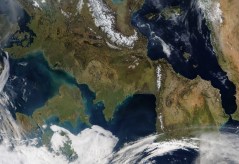Deforestation and Water Quality: Uncovering the Hidden Impacts
Deforestation is a pressing global issue that not only affects climate change but also has significant implications for water quality. As forests are cleared for agriculture, urban development, and other uses, the consequences extend beyond the immediate loss of trees. In this article, we will explore how deforestation impacts water quality and what it means for our ecosystems and communities.
How Deforestation Affects Water Quality
When trees are removed from an area, the natural filtration system provided by forest ecosystems is disrupted. Trees play a crucial role in absorbing rainfall and regulating water flow. Without this canopy cover, rainwater can lead to soil erosion, which carries sediment into nearby rivers and lakes. This sedimentation can cloud water bodies, making it difficult for aquatic life to thrive and reducing overall water quality.
Erosion and Sedimentation: The Direct Consequences
One of the most immediate effects of deforestation on water quality is increased soil erosion. With fewer roots to hold soil in place, heavy rains wash away topsoil, leading to greater amounts of particulate matter entering waterways. This process not only degrades habitats but can also increase the cost of treating drinking water due to higher levels of contaminants that need removal before consumption.
Nutrient Runoff: A Secondary Effect
Deforested areas often experience nutrient runoff as fertilizers used in agriculture wash away into streams and rivers. This excess nitrogen and phosphorus can lead to algal blooms that deplete oxygen in the water—creating dead zones where aquatic life cannot survive. Such nutrient overloads pose serious threats to freshwater systems that millions rely on for drinking purposes.
Impact on Indigenous Communities
The effects of deforestation on water quality also disproportionately affect indigenous communities who depend directly on these ecosystems for their livelihoods. Clean water sources become scarce as pollution increases from runoff caused by land conversion practices associated with deforestation. This not only affects health outcomes but also disrupts cultural practices tied closely to natural resources.
Mitigation Strategies: Protecting Water Quality Amidst Deforestation
To combat these adverse effects on water quality stemming from deforestation, various strategies can be employed. Reforestation efforts are vital; restoring tree cover helps re-establish natural filtration processes while preventing erosion. Additionally, implementing sustainable land-use practices can reduce runoff while promoting agricultural productivity without sacrificing forest integrity.
In conclusion, understanding the link between deforestation and its impact on water quality is essential for fostering sustainable environmental practices. By taking informed steps toward mitigating these issues through community engagement and responsible resource management, we can protect both our forests and our precious waterways.
This text was generated using a large language model, and select text has been reviewed and moderated for purposes such as readability.






